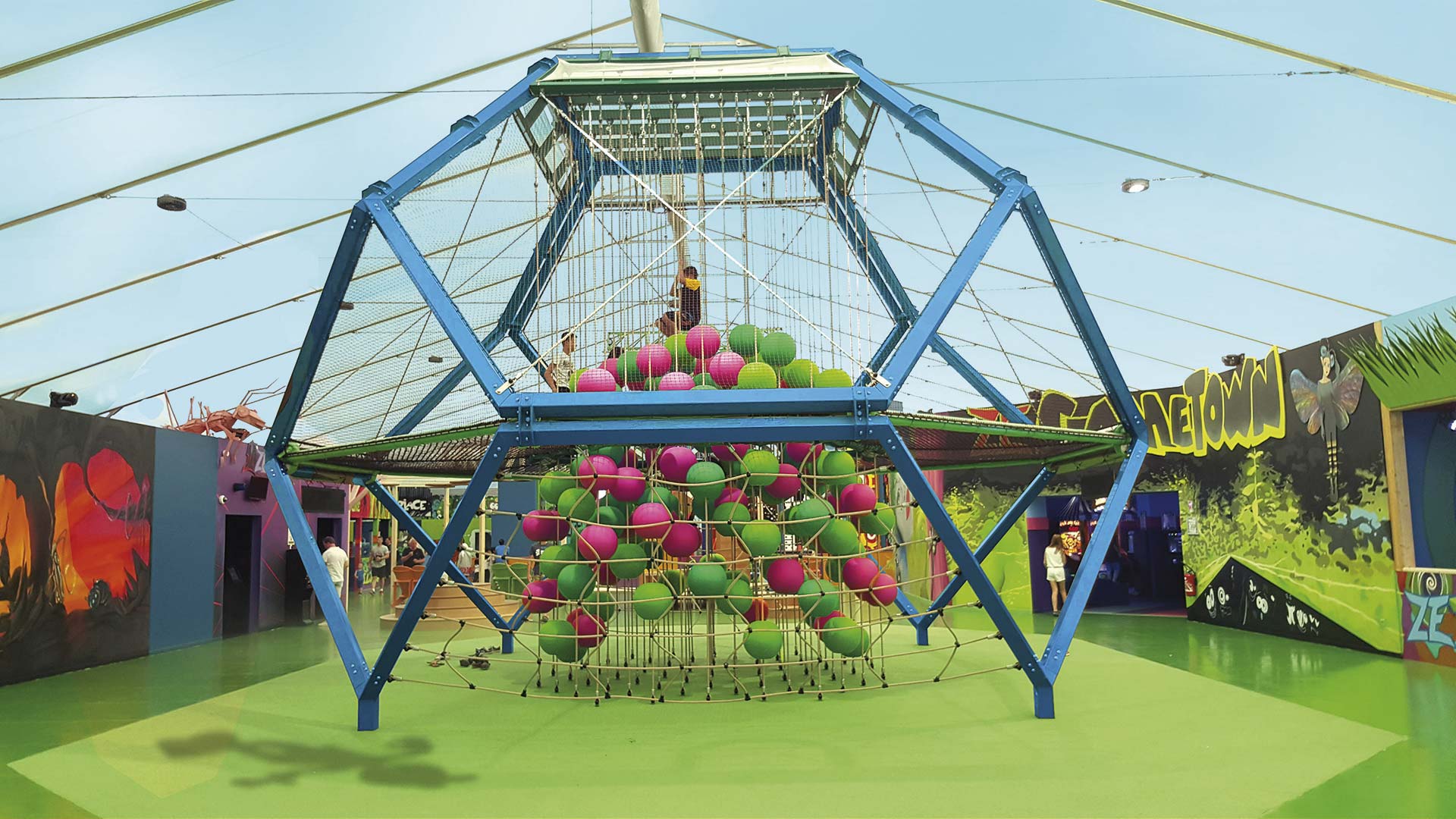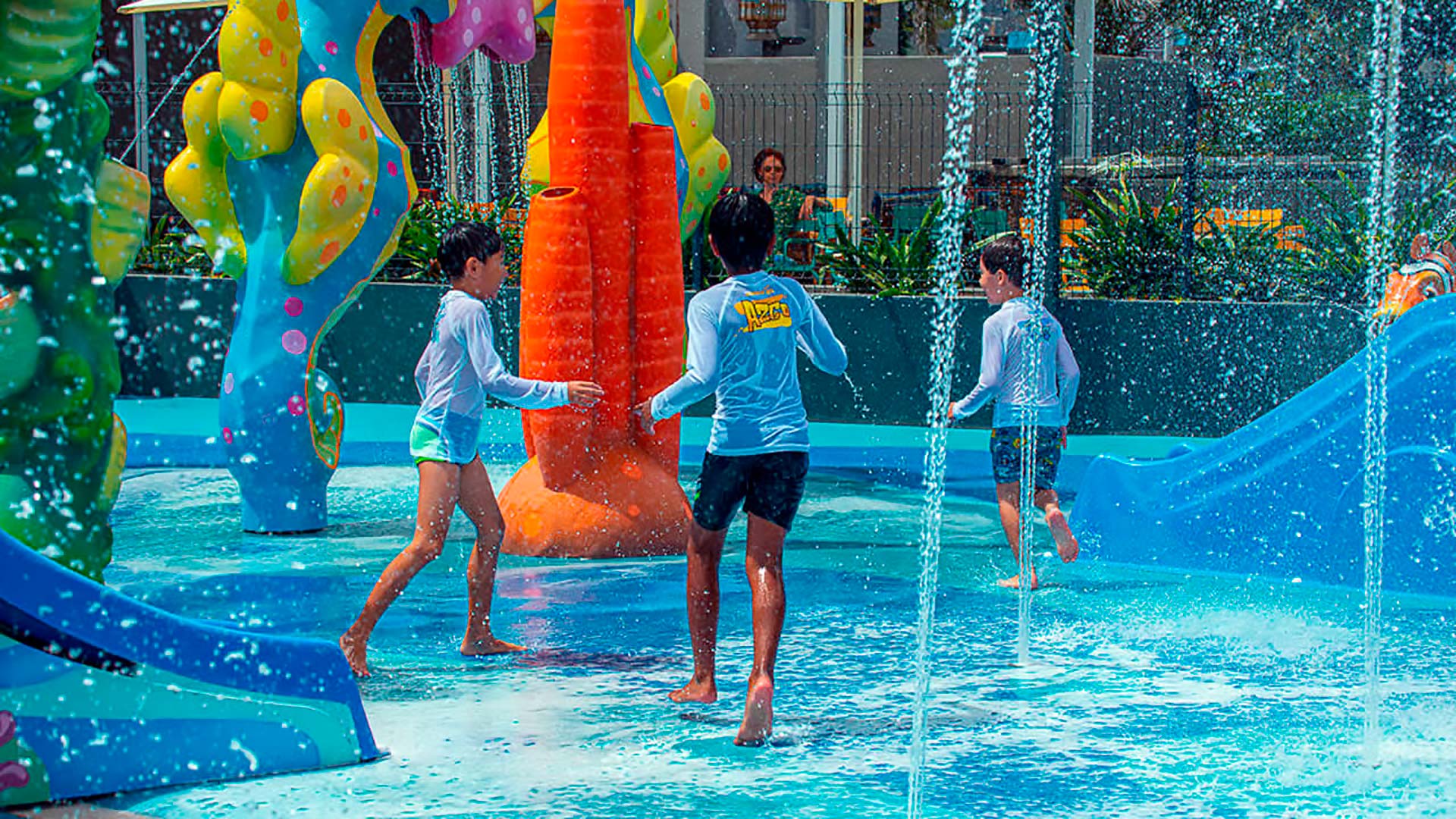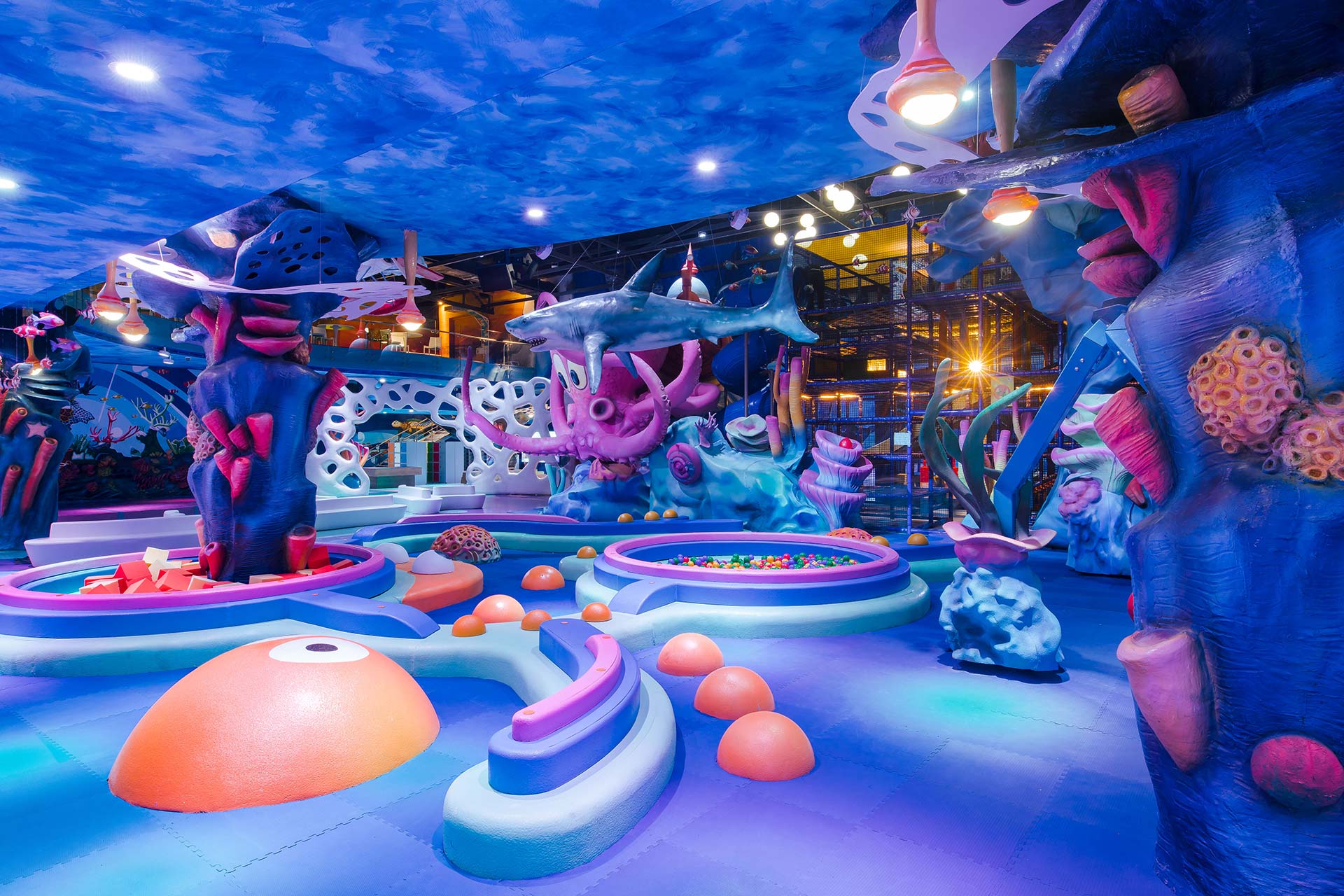When considering the design, construction and installation of playgrounds and play areas, every developer must ensure that a number of fundamentals are in place, to ensure that the project is guaranteed to be successful. These fundamentals are now set out in a recent report by the Technical Committee of Good Practices of the Spanish Association of Manufacturers of Street Furniture and Playgrounds (AFAMOUR). Back in 2016, this organisation recognised Amusement Logic as a finalist in the category of Spanish manufacturers, for its “meritorious performance in innovation and design” of playground equipment, for our CloudLand creation. Throughout our years of experience, we have always put AFAMOUR’s recommendations into practice, both for CloudLand and for the Waterparty range, our assortment of Splash Pads, Spray Toys and Spray Toons and, in general, all our children’s games and playgrounds.
The first of the fundamental elements for success concerns both the space available for the game and its physical location. Therefore, the project must have a sufficient surface area to allow “movement, physical activity and multiple play activities”, and ideally, also at least 20% of its total surface area should be for sitting and resting areas. In addition, it should provide a minimum distance of 5 m from surrounding traffic, and provide elements that serve as a physical barrier to it. Proximity to sources of noise and environmental pollution that are harmful to users, must be avoided at all costs. It must also be possible to provide adequate access, if there is none, to facilitate entry to the site for citizens from all walks of life. Finally, the area must be inhabited by a sufficient number of people and have the necessary infrastructure for services, transport, drinking water, electricity, etc.
With regard to the organisation of the park’s space and the layout of the games within, it is essential to “plan the paths and circulation in the leisure area, as well as the access to the play elements”. Adequate signposting of attractions, areas and services helps the user-experience to be organised, efficient and pleasant. Another important detail is the visibility between the play areas and from the rest areas, which is necessary for the children’s companions to enjoy a more relaxed stay. Another essential aspect of the design of children’s play facilities is their accessibility; it must be ensured that people with functional diversity can enjoy play with others, without segregation or exclusion.
From a more general point of view, consideration should be given to the use and prioritisation of “the presence of nature“, which provides shadows, colour, organic barriers, beauty and, at the same time, “maximises the hours and periods of enjoyment of the playground“, as well as representing an added value. On the other hand, the right lighting makes it possible to prolong the enjoyment of the facilities, including on darker winter evenings. Likewise, the variety of attractions must take into account both the age of the participants and their level of activity. Therefore, older children should find challenges that motivate and excite them, and younger children should find age-appropriate activities. Overall, the variety and layout should help users to play together and with their friends and their companions. In this way, the playground will not only contribute to the development of physical skills, but also social, cognitive, emotional and creative ones, and ultimately to user satisfaction.










